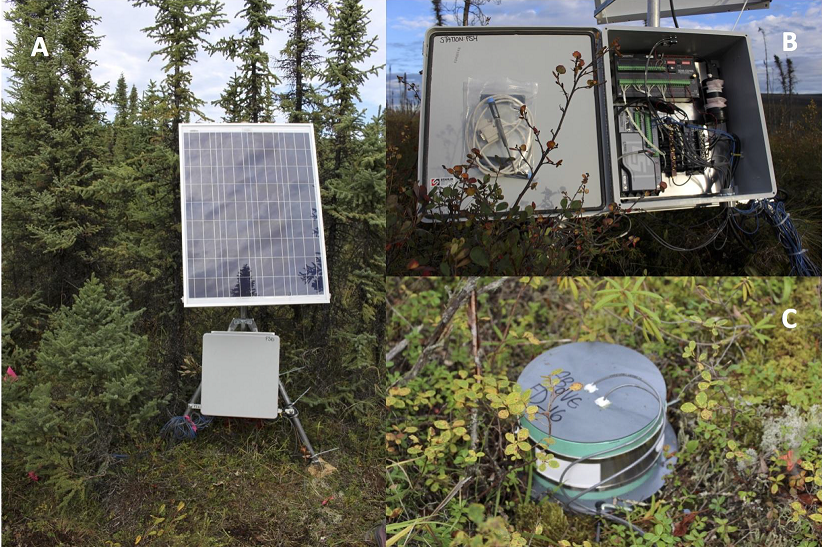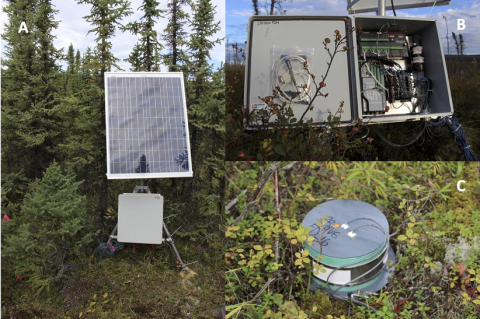ABoVE: Year-Round Soil CO2 Efflux in Alaskan Ecosystems, Version 2
This new version of this dataset from the Arctic-Boreal Vulnerability Experiment (ABoVE) provides soil-surface carbon dioxide (CO2) efflux derived from measurements of soil respiration with forced diffusion (FD) chambers. These data have undergone more rigorous processing and includes additional sites. Soil Respiration Stations (SRS) were installed at 11 boreal and tundra sites along a broad S-N transect starting from near Fairbanks in interior Alaska and extending to Atqasuk in northern Alaska. Each SRS measured soil respiration and ambient atmospheric CO2 concentrations with a forced diffusion (FD) chamber to derive soil CO2 flux. The SRS also provides soil CO2 concentrations and temperatures using instrumented chambers buried at 5, 10, and 15 cm depths in the soil profile.
ABoVE is a NASA Terrestrial Ecology Program field campaign based in Alaska and western Canada between 2016 and 2021. Research for ABoVE links field-based, process-level studies with geospatial data products derived from airborne and satellite sensors, providing a foundation for improving the analysis and modeling capabilities needed to understand and predict ecosystem responses and societal implications.See all ORNL DAAC data from ABoVE.
Data Citation: Minions, C., S. Natali, J.D. Watts, S. Ludwig, and D. Risk. 2019. ABoVE: Year-Round Soil CO2 Efflux in Alaskan Ecosystems, Version 2. ORNL DAAC, Oak Ridge, Tennessee, USA. https://doi.org/10.3334/ORNLDAAC/1762
Data Center: ORNL DAAC
Sponsor: EOSDIS


